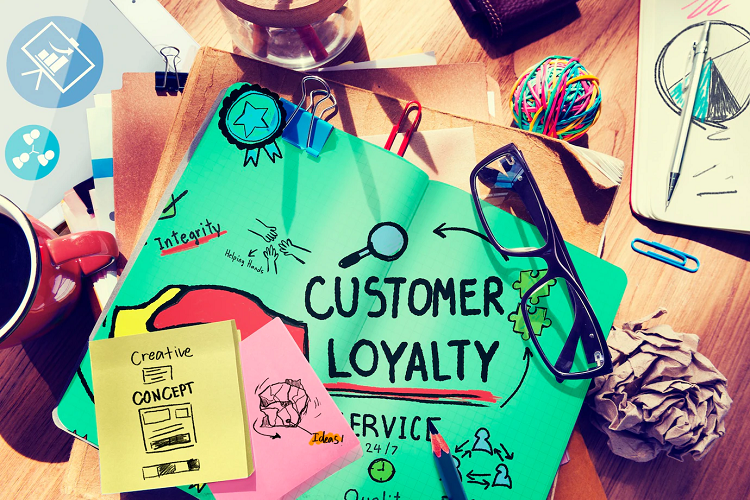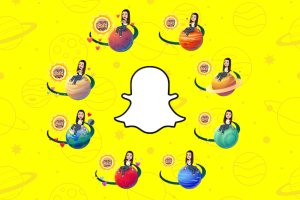Do you have a customer loyalty program in the first place? If you haven’t added a customer loyalty program, it’s a good time to take the initiative. Customer loyalty program helps you in improving customer exposure, leveraging sales, and providing seamless customer data to examine retailers and understand their potential customers better. Loyalty programs have become popular for multiple reasons, and vice versa. According to the latest reports, customers in the US have attained 5.6 billion loyalty program-based memberships as of Q4 2021.
If you offer stars, points, bucks, and anything in parallel, a customer loyalty program provides some beneficial rewards for both the potential customers and the retailers. The customers will receive discounts and earn rewards. Retailers can easily consolidate from this relationship, including customer retention, increased sales and revenue, consumer data and information, and marketing tactics.
According to the reports, it has been estimated that over 73% of customers are more likely to recommend multiple organizations with strong customer loyalty programs. Hence, loyal customers tend to retain those customers who purchase orders in bulk quantities. Over 80% of customers say that a potential customer loyalty program makes them more likely to stay informed about your brand. A strong essence with your brand can make the difference between your online store and the competitor in the market segment.

What is Customer Loyalty Program?
Customer Loyalty Program is a comprehensive set of strategies that enable you to provide customers with timely incentives as per their previous buying behaviors and the users’ preferences. It will encourage customers to continue using their products or services as they will easily accumulate the points and earn enormous revenue.
Nowadays, customer loyalty programs must reflect the essential needs of modern customers. Loyal customers can’t be regularized by the regular buyers anymore. The brands can provide multiple program members with rewards such as discounts, freemium products, or benefits from the global partnerships with the relevant brands. It enables customers to join the program in order to maximize their benefits and are more likely to continue doing business with their brand rather than becoming your competitors.
How Does Customer Loyalty Program Work?
Fortunately, loyalty programs are initiated when a business recognizes the need to leverage a customer lifetime value-based approach and retention parameters. The user can easily build a program that your customers can be part of that starts enrolling multiple members in a glitch. Hence, the following is a step-by-step process of how this plugin works:
1st Step: Merchants can easily define the goals and objectives of the program and plan the implementation tactics for your brand.
2nd Step: The potential customers can easily launch and market their program to their targeted customers.
3rd Step: The customer can easily sign up for the said program.
4th step: If your program is based on incentives, customers can perform multiple actions to receive enormous rewards.
5th step: Customers share the program with their colleagues and family members.
6th step: The brand monitors the effectiveness of the program and makes an essential number of improvements as needed.
The Advantages of Loyalty Programs
If you want to leverage sales to take your brand’s reputation to the next level, a powerful loyalty program can precisely sustain the impact of business success. Let us examine some of the essential benefits of initiating a loyalty program:
Increase Sales and Revenue
Loyalty programs increase the lifetime value of customers and their members by providing them with the ability to purchase from your brand on a regular basis.
The fact is that the customers tend to drive extra value from the programs. You don’t need to compete with your potential customers based on the pricing parameters. Online shopping becomes more exponential than transactional, and loyal customers tend to stick with the user instead of shopping with the basic price metrics.
Reduce Marketing Expenses
Precisely, retaining your customers is much less expensive than winning new customers. If you have a loyalty program, it maximizes the value of every customer. Your business can decrease acquisition costs while still tempting to achieve its goals and objectives.
A Great Source of Information
Loyalty programs are a seamless way to gather enormous amounts of customer information. Users are required to create an account and provide a certain amount of personal information to sign up for their loyalty program.
It enables you to track each and every aspect of customer engagement to create a detailed profile for specific customers. Along with a greater understanding of your members’ interests and preferences, you can easily personalize the loyalty programs to improve the relationships with your customers on a long-term basis.
Improved Customer Experience
Loyalty programs help users improve their customer experience by providing their users with engaging methods to interact with your brand. Apart from the basic transactional shopping workflow parameters, the rewards-based structure transforms the shopping experience into a full-fledged game.
Improved Connection with Customers
It has been estimated that customers in your loyalty program can feel a full-fledged emotional collaboration with your brand. It is obvious that the more appreciated they feel, the more they will likely share their business with their colleagues and vice versa.
How to Choose a Loyalty Program
There are a wide variety of customer loyalty programs. The various types of programs are better and well-suited for multiple sectors, industries, and companies. Prior to creating your loyalty program, you should always determine which type of loyalty program is best suited for your business.
Types of Programs
Most loyalty programs have three common objectives: to retain customers, increase customer lifetime value, and show the customer appreciation. However, each type of program takes a different approach to achieving this goal.
Program of Points and Badges
The points and badges program is probably the most common way. With this approach, customers earn multiple points for each dollar they spend on multiple brands’ products. There are some programs that will also give you more points and badges for things like making a purchase.
Precisely, customers redeem their points, badges, and ranks for various rewards that include discounts on products or freemium items. The rank and points programs tend to encourage customers to purchase more frequently as they can easily accumulate rewards for each person.
Tiered Programs
Significantly, the tiered program segments the members into multiple levels or tiers that easily determine the rewards they can easily receive. Customers can transit from one tier to another by precisely engaging with their brand. Every time a customer shuffles into a new tier, the value of their rewards is increased further.
Likewise, the tiered program offers customers initial rewards for joining the program while still incentivizing them to make enormous amounts of purchases. It also incorporates some gamification tactics into the program so that members can easily track their progress and unlock new rewards based on their activity.
Likewise, customers can gain enormous amounts of long-term value from this program as it reaches a new tier offering sustainable benefits and vice versa. It doesn’t matter what kind of points program you have, the customer tends to lose all of the important information because the system has been set up to let them redeem their points for many different things.
Paid Programs
Using a paid program, you can charge multiple customers a monthly or annual membership fee to join a full-fledged program. In terms of exchange, the customer tends to receive ongoing rewards that include free shipping or a set discount rate on all multiple orders. The paid programs also tempt users to add member-exclusive advantages and vice versa.
This type of loyalty program works well for frequent buyers because they are more likely to join a loyalty program that requires an upsell payment.
Conclusion
In addition, loyalty programs are an avoidable resource for growing your business to the next level. Using a strong loyalty program, you can easily strengthen your communication aspects with your potential customers to improve retention rate and lifetime sustainable value in terms of multiple processes and more.
To create a successful loyalty program, you must properly understand the value of your customers and the types of programs that work very well for your industry. Hence, if you need to add seamless eCommerce technology to manage your program effectively, you will need an LMS system. You have a centralized platform to manage each and every point of your loyalty program. The platform also supports multiple user roles, allowing you to centrally manage multiple accounts for different business groups.
This service allows partners to easily access your system in order to change specific programs, rules, and customer engagement. This means that there are so many reasons why using a loyalty program to boost sales and revenue is a great idea.



